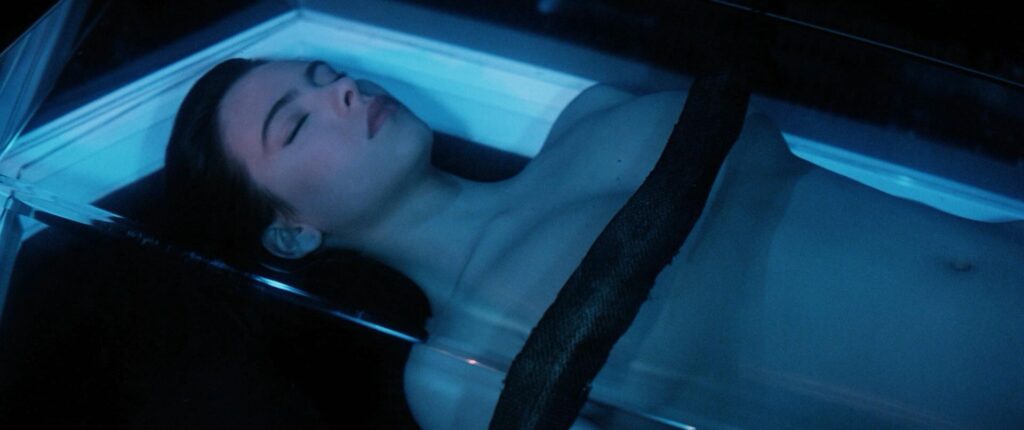
Tobe Hooper’s science-fiction/horror masterpiece Lifeforce (1985) was the first of a three picture deal the filmmaker had with Canon films following the success of Poltergeist (1982). Known for his visually inventive and resourceful genre pictures, Hooper’s Lifeforce is both while also being the filmmaker’s most mature exercise in intertextuality. Hooper’s film, like its source novel by Colin Wilson, looks at the intersections between vampire lore and the parasitical alien narrative.
The three primary filmic texts that Lifeforce draws upon are Roy Ward Baker’s The Vampire Lovers (1970), Philip Kaufman’s Invasion Of The Bodysnatchers (1978) and Ridley Scott’s Alien (1979). The inciting action of Lifeforce is borrowed almost directly from Alien in design but in terms of characterization owes more to The Vampire Lovers. The aliens of Lifeforce operate much like the vampires in any Hammer horror picture, even if they share their parasitic tendencies with the “face-hugger, by first enthralling their victims with sex and then feeding off of them.
The creatures of Lifeforce have the ability to leave and inhabit other bodies which is something vampires traditionally cannot do. It is however a trait shared with the invasive species in Invasion Of The Bodysnatchers. Both films exploit the fear and paranoia around identity in western society. It is a trope which originates during the Cold War that held sway into the material and then internet ages as human identity became less and less fixed.
Given the complexity of the film and its many fantastic elements it is no wonder than Hooper is able to conjure so many distinct images. The emaciated vampire victims are terrifyingly convincing while the simple image of a naked woman wondering a laboratory in a dream state is chilling in its uncanniness. Hooper’s real trick though was to wed both the practical and the computer generated special effects as he did in Poltergeist.
The number of erotic and gory spectacles in Lifeforce that are hung upon its outlandish plot are reminiscent of EC Comics. Hooper has always thrived in an aesthetic arena, no matter the genre, that draws upon pulp literature. Even a big production like Lifeforce is still essentially an exploitation film in Hooper’s hands. Hooper is a master at giving the audience the most sensational images while also telling an affecting story that still manages to be reflective.
